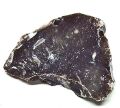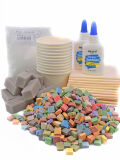Game replicas
Historical games - Ludi romani
This is how the Romans used to play in ancient times: from gladiatorial games with an original Roman shield, to skill and luck in the round mill game.
Roman games - Panem et circenses
Play the traditional board game Duodecim Scripta or roll real ancient bone dice. Even the ancient Romans enjoyed playing "ludi romani": Roman games. In fact, the Romans were crazy about them. No wonder! The entertainment value! But see for yourself...
Follow the pages of the Roman Shop into the world of ancient games!
The games and amusements of everyday Roman life are still an exciting alternative to today's modern games and toys for children and adults alike. Children can dress up as Roman gladiators and even make their own helmets - including a Roman legionary's helmet! There is a matching wooden dagger, a pugio, and a Roman shield, called a scutum by the Romans, which can be found on the Roman Shop pages under Roman Games. Or how about a gladiator's sword, complete with a real Roman sword holder? For children, there is even the net with which the gladiators in the arena tried to prevent their opponent from winning.
Ancient and modern Roman games!
For those who prefer less fighting, there is also a pretty toy horse and rider made of clay and other toy statuettes in the Roman Games section of the Roman Shop - even a Roman jointed doll made of real clay with movable limbs that can be painted and dressed and undressed. If you feel like it, you can try your luck with the Astragalus - a dice oracle! Time flies with this game!
A gift from Rome
Ancient Small Art also offers a wonderful variety of original game gifts and ideas - for yourself or for those you would like to delight with historical games from Roman times, when playing games had a completely different meaning. Many of the games were designed to encourage social interaction, something that has been neglected in modern times. Browse through the Roman Shop pages and the Roman Games category and let your imagination run wild!
Take a look at the colourful world of the children of Rome, the Roman games: They are so simple and yet so beguilingly beautiful! Take a trip into the world of parlour games and entertainment in ancient times.
A curious anecdote about Roman games
Caligula was once playing dice.
When he realised that he had no money, he asked for the tax lists of Gaul and ordered the execution of the richest among them. Then he returned to his fellow players and said: "You are playing for a few miserable denarii, while I have collected about 150 million denarii".
Sources: Dio Cassius, Roman History LIX 22.3 f.
Games in the Middle Ages
There are many archaeological finds which confirm that games were played with pleasure and in great numbers in the Middle Ages, especially by adults. Unfortunately, of course, the games are not accompanied by instructions, so in some cases we can only guess how the game in question was actually played. But we can be sure that many of today's parlour games owe their existence to the creativity and imagination of medieval people.
Board Games
Board games are thousands of years old and were very popular in the Middle Ages. Chess, for example, is an ancient game that was considered a game of chivalry and a means of education in the Middle Ages. The Byzantine version, or circular chessboard, was well known at the time and the pieces were carved from deer antlers, for example. In the Byzantine version, the board is divided into four rings containing 64 squares. In Europe the pieces were the king and the bishops, while in the original version in the East they were the shah, the elephants and the vizier. Again, the aim was to eliminate the king, but victory could also be achieved by capturing all the other pieces. The German name for chess was Schachzabel and there were many texts about the game, called chess allegories. A form of backgammon was also popular in the Middle Ages. At that time the game was called Wurfzabel, Tricktrack or Puff and the rules were little different from those of today. Initially it was a favourite pastime of the nobility, but gradually it became popular with the general public. Tafl or Tablut is another board game that was very popular in the Middle Ages. In Tablut, a king stands in the centre of the board and he and his defenders must defend themselves against the attackers. The attacker must try to capture the king, and the player with the king wins if the king is brought to the edge or corner of the board. You can alternate as far as you like, and you can capture an opponent's piece by surrounding it with two of your own. Alquerque is the medieval version or precursor of checkers, in which twelve white and black pieces are placed on crosses of five horizontal, vertical and six diagonal lines. The rules are very similar to those of modern checkers and the aim is to eliminate all the opponent's pieces. Mill is also a very old game and was played in the same way in the Middle Ages as it is played today.
Card games
Unlike other games, card games were not only very popular in the Middle Ages, but were also invented at that time. Although they were frowned upon by the Church and the authorities, and sometimes regarded as the work of the devil, they were still widely played, often in large groups and for money. Old writings show that the names of the games were often changed because of the prohibition. The games that were popular at the time can be divided into three groups: discard games, trick games and betting games. In games such as Poch, the aim was to discard the cards as quickly as possible. In tarot, the aim was to collect as many or as few tricks as possible, and in betting games such as poker, bets were placed on the outcome of the game. Today's games of baccarat, twenty-one and rouge also date from this period. However, until the end of the Middle Ages, there were no standardised cards and the rules varied widely. For example, the number of cards or the value of each card varied.
Dice games
Dice games were also partly forbidden in the Middle Ages, but they were still played with pleasure. There were not only 6-sided dice, but also 4-sided or even round dice, and there were many different variations of the game. Dice games such as A Mayores or Tres Canes were played with three dice and the aim was to get the highest roll. House of Fortune was played on a board with two six-sided dice. The board consisted of 12 squares arranged like a house. Depending on the value of the roll, the player had to perform an action. For example, if a player rolled a six, he had to place a coin on the 'six' square. If you roll two sixes, you get all the coins in the seven box, and if you roll two aces, you get all the other coins.
Children's games
The card and board games were not designed for children, but for them there were, among other things, plug-in horses, hoops, marbles or balls made from pig bladders. Children's toys were by no means of high quality, but were made from simple materials such as scraps of wood or stones. Bones were also used, e.g. for throwing or collecting games.
Here again all categories of antique game replicas
Schools and authorities in DE can conveniently order on account. Private customers are welcome to use Ratepay purchase on account (Paypal service)
Safe and easy ordering within Germany from 75 €
Always new ideas and optimised products through our years of experience and intensive cooperation with schools and museums.














